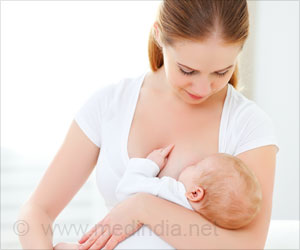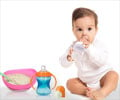Is breastfeeding the best feeding method? Yes, breast milk is always safe and nourishing for infants. Increasing education and community exposure can help end breastfeeding stigma.

‘Breast milk is always the best milk for infants. Therefore, increasing breastfeeding education and community exposure (particularly in rural areas) could be the best way to end breastfeeding stigma. #breastfeeding #endbreastfeedingstigma #formulafeeding #breastfeedingbenefits’
Read More..




Read More..
Advertisement
Benefits of Breastfeeding
For mothers, breastfeeding can improve recovery after giving birth and lower the risks of cancer. For babies, the nutrients strengthen their immune system and help lower their risk of developing obesity and diabetes. Now, a new study at the University of Missouri Sinclair School of Nursing is helping researchers better understand the factors that influence moms, particularly in rural areas where breastfeeding is less common, when deciding how to feed their babies.Advertisement
Promoting and Supporting Breastfeeding
In the study, Karry Weston, a doctoral student at the MU Sinclair School of Nursing, interviewed women in Missouri who chose to breastfeed their babies about the influences that impacted their decision-making. She learned that when these women were both educated about the health benefits of breastfeeding and also had the support of family, friends, neighbors or co-workers who also chose to breastfeed as moms, the stigma surrounding breastfeeding was reduced with increased community exposure (1✔ ✔Trusted SourceMaternal COVID vaccination and breastfeeding during a pandemic: Habitus and health behavior decision making
Go to source).
Advertisement
Let’s End Breastfeeding Stigma
“There was one woman in particular who was from a very rural area and she told me that in her community, no one breastfed since formula feeding was the cultural norm and nobody wanted to stick out like a sore thumb,” Weston said. “However, once she took a leap of faith and started to breastfeed her baby, soon her friends, who were also moms, started to do it too because they felt comfortable after seeing their friend do it, so it became more normalized.”Weston, who grew up in rural Missouri herself, is currently working on a project to better understand the factors that impact mothers’ decisions of whether or not to breastfeed specifically in rural areas, with grant funding from the National Institutes of Health (NIH) (2✔ ✔Trusted Source
NIH grant will help research lack of breastfeeding in rural Missouri
Go to source).
“If we can increase both education and community exposure, people can broaden their horizons, change their minds and learn about different options or different ways of doing things, which has enormous potential implications for improving health care outcomes,” Weston said. “Right now my focus is on boosting breastfeeding rates given the health benefits, but down the road I think studying the factors that influence decision-making can help in other areas like research on diabetes management or even exercise.”
“Maternal COVID vaccination and breastfeeding during a pandemic: Habitus and health behavior decision making” was published in Public Health Nursing. Coauthors include Linda Bullock, Albert L. Hsu, Henry Wan, Megan Burnam-Cole, Kevin D. Everett and Jane A. McElroy. Funding was provided by the National Institutes of Health/National Institute of Nursing Research and the University of Missouri Department of Obstetrics and Gynecology.
References:
- Maternal COVID vaccination and breastfeeding during a pandemic: Habitus and health behavior decision making - (https://onlinelibrary.wiley.com/doi/10.1111/phn.13221)
- NIH grant will help research lack of breastfeeding in rural Missouri - (https://showme.missouri.edu/2022/mu-grant-will-help-research-lack-of-breastfeeding-in-rural-missouri/)
Source-Newswise













